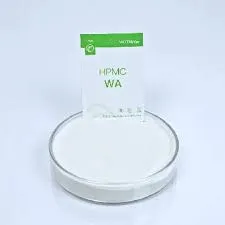
Ott . 12, 2024 08:03 Back to list
hydroxyethyl cellulose synthesis
Synthesis of Hydroxyethyl Cellulose An Overview
Hydroxyethyl cellulose (HEC) is a non-ionic water-soluble polymer derived from cellulose. Its unique properties, such as viscosity enhancement, water retention, and film-forming capabilities, make it a valuable ingredient in various industrial applications, including construction, pharmaceuticals, cosmetics, and food processing. The synthesis of HEC involves several key steps that transform cellulose into a high-performance polymer.
Synthesis of Hydroxyethyl Cellulose An Overview
The alkalized cellulose is then reacted with ethylene oxide in an alkaline environment. Ethylene oxide acts as an etherifying agent, introducing hydroxyethyl groups into the cellulose structure. The reaction conditions, including temperature, pressure, and the concentration of chemicals, are carefully controlled to ensure the successful synthesis of HEC. Typically, a reaction temperature between 40°C and 80°C is maintained, allowing for optimal etherification without degrading the cellulose backbone.
hydroxyethyl cellulose synthesis

After the etherification reaction, the product undergoes a purification process to remove unreacted reagents and by-products. This can involve washing with solvents, followed by drying to obtain a pure form of hydroxyethyl cellulose. The resulting HEC is often a white, free-flowing powder that can be easily dispersed in water to create viscous solutions.
Characterization of the synthesized HEC is crucial to determine its molecular weight and degree of substitution (DS), which directly affect its properties and performance in applications. Higher molecular weights typically lead to greater viscosity, while an appropriate DS ensures solubility in water and the desired rheological properties.
HEC's versatility as a thickening agent, binder, and stabilizer makes it essential in a variety of products. In construction, it enhances the workability of mortars and plasters. In the pharmaceutical field, it serves as a thickener and emulsifier in formulations, improving drug delivery systems. Additionally, in the cosmetic industry, HEC contributes to the texture and stability of creams and lotions.
In conclusion, the synthesis of hydroxyethyl cellulose is a multidimensional process that transforms natural cellulose into a valuable polymer with wide-ranging applications. As industries continue to seek sustainable and effective materials, the relevance of HEC and its synthesis will only grow, demonstrating the importance of cellulose-based derivatives in modern technological advancements.
-
Unlocking the Benefits of HPMC Products: A Gateway to Versatile Applications
NewsAug.07,2025
-
Unleashing the Potential of HPMC Ashland: A Comprehensive Look
NewsAug.07,2025
-
Tile Bonding Cellulose: The Key to Superior Adhesion and Durability
NewsAug.07,2025
-
Hydroxypropyl Methylcellulose Powder: The Versatile Component in Modern Pharmaceuticals
NewsAug.07,2025
-
Hydroxyethyl Cellulose: The Versatile Solution for Various Industries
NewsAug.07,2025
-
Hydroxyethyl Cellulose (HEC): The Versatile Polymer for Various Applications
NewsAug.07,2025







